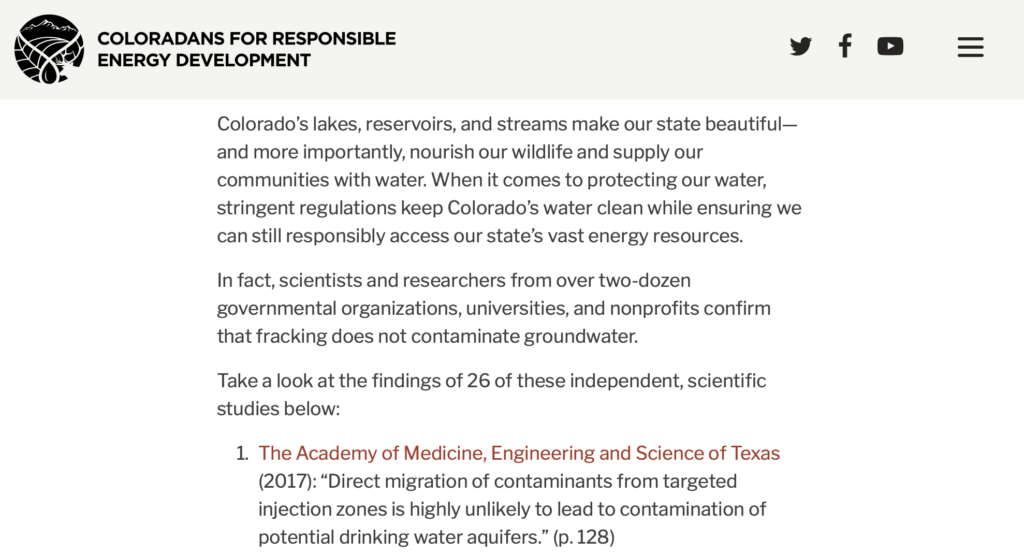Energy in depth is a media company for the Independent Petroleum Association of America. Energy in depth continues to push false claims that the Environmental Protection Agency (EPA) says there has been no ground water contamination. The EPA later clarified in it\’s FAQs.
Q: Why did EPA remove “no evidence of widespread, systemic impacts” from the assessment?
A: EPA’s scientists included the following sentence in the 2015 draft assessment report: “We did not find evidence that these mechanisms have led to widespread, systemic impacts on drinking water resources in the United States.” That sentence was included in a section of the draft assessment report that also highlighted various limitations due to uncertainties and data gaps.After receiving comments from the SAB, EPA scientists concluded that the sentence could not be quantitatively supported. Contrary to what the sentence implied, uncertainties prevent EPA from estimating the national frequency of impacts on drinking water resources from activities in the hydraulic fracturing water cycle. Additionally, EPA scientists and the SAB, came to the conclusions that the sentence did not clearly communicate the findings of the report.
Environmental Protection Agency
Further more the EPA has confirmed that there have been cases of groundwater contamination.
Yes. EPA has found scientific evidence that activities in the hydraulic fracturing water cycle can impact drinking water resources under some circumstances. Impacts can range in frequency and severity, depending on the combination of hydraulic fracturing water cycle activities and local- or regional-scale factors. The following combinations of activities and factors are more likely than others to result in more frequent or more severe impacts:
Environmental Protection Agency
- Water withdrawals for hydraulic fracturing in times or areas of low water availability, particularly in areas with limited or declining groundwater resources;
- Spills during the management of hydraulic fracturing fluids and chemicals or produced water that result in large volumes or high concentrations of chemicals reaching groundwater resources;
- Injection of hydraulic fracturing fluids into wells with inadequate mechanical integrity, allowing gases or liquids to move to groundwater resources;
- Injection of hydraulic fracturing fluids directly into groundwater resources;
- Discharge of inadequately treated hydraulic fracturing wastewater to surface water resources; and,
- Disposal or storage of hydraulic fracturing wastewater in unlined pits, resulting in contamination of groundwater resources.
So case closed? We think not.
Full report – https://cfpub.epa.gov/ncea/hfstudy/recordisplay.cfm?deid=332990
FAQs – https://www.epa.gov/hfstudy/questions-and-answers-about-epas-hydraulic-fracturing-drinking-water-assessment


